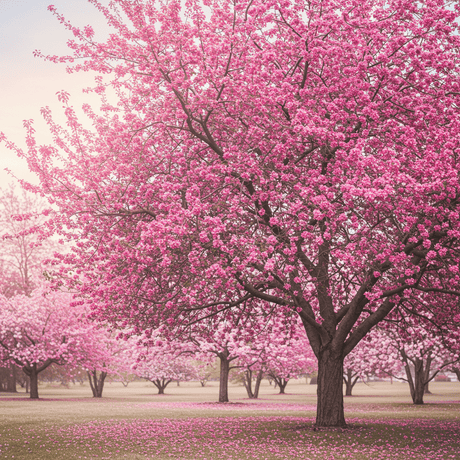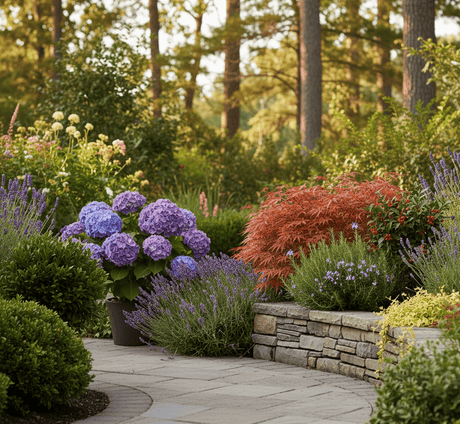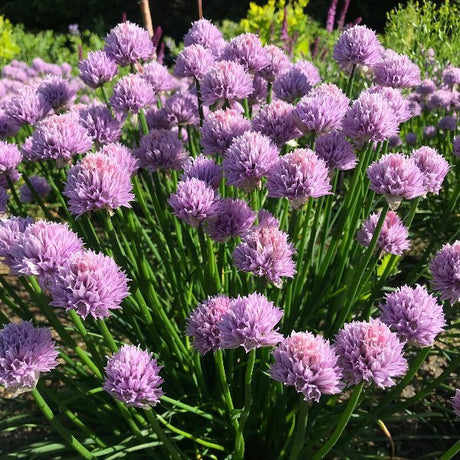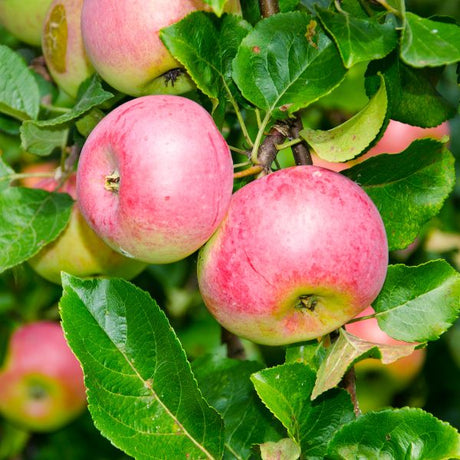Jelly Palm Tree
Butia capitata
- Stay Protected with Plant Sentry ™
Plant Sentry™
Plant Sentry™

Plant Sentry™ Protected
Your order is protected by our compliance system that:
- Prevents restricted plants from shipping to your state
- Ensures plants meet your state's agricultural requirements
- Protects gardens from invasive pests and diseases
Delivery and Shipping
Delivery and Shipping
Delivery and Shipping
Fast, Safe Plant Delivery
Ships in 3-4 business days • Tracking provided • Weather protected
| Under $50 | $9.99 |
| $50 - $99.99 | $14.99 |
| $100 - $149.99 | $16.99 |
| $150 - $198.99 | $24.99 |
| $199+ | FREE |
✓ Zone-specific timing • ✓ Professional packaging • ✓ Health guarantee
Understanding Plant Options
Nature Hills offers plants in two main formats:
- Container Plants: Grown in pots with soil, sized by container volume and plant age
- Bare Root Plants: Dormant plants without soil, sized by height measurements
Container Plant Sizes
Container sizes indicate plant age and growing capacity rather than liquid volume equivalents. Our containers follow industry-standard nursery "trade gallon" specifications, which differ from standard liquid gallon measurements.
Young Plants (6 months to 18 months old)
| Container Size | Actual Volume | Metric Equivalent |
|---|---|---|
| 2" x 2" x 3" | 0.18 - 0.21 dry quarts | 0.20 - 0.23 dry liters |
| 4" Container | 0.31 - 0.87 dry quarts | 0.35 - 0.96 dry liters |
| 4.5" Container | 0.65 dry quarts | 0.72 dry liters |
| 6" Container | 1.4 dry quarts | 1.59 dry liters |
| 1 Quart | 1 dry quart | 1.1 dry liters |
| 5.5" Container | 1.89 dry quarts | 2.08 dry liters |
Established Plants (18 months to 2.5 years old)
| Container Size | Actual Volume | Metric Equivalent |
|---|---|---|
| 2 Quart | 2 dry quarts | 2.2 dry liters |
| #1 Container | 2.26 - 3.73 dry quarts | 2.49 - 4.11 dry liters |
| 5" x 5" x 12" | 3.5 - 4.3 dry quarts | 3.85 - 4.74 dry liters |
Mature Plants (2-4 years old)
| Container Size | Actual Volume | Metric Equivalent |
|---|---|---|
| #2 Container | 1.19 - 1.76 dry gallons | 5.24 - 7.75 dry liters |
| #3 Container | 2.15 - 2.76 dry gallons | 8.14 - 12.16 dry liters |
Large Plants (3-5 years old)
| Container Size | Actual Volume | Metric Equivalent |
|---|---|---|
| #5 Container | 2.92 - 4.62 dry gallons | 12.86 - 20.35 dry liters |
| #6 Container | 5.25 - 6.01 dry gallons | 23.12 - 26.42 dry liters |
| #7 Container | 5.98 - 6.53 dry gallons | 26.34 - 28.76 dry liters |
Bare Root Plants
Bare root plants are sold by height from the root system to the top of the plant. Plants may exceed minimum height requirements.
Common Sizes:
- Trees: 1 foot, 2 feet, 3 feet, 4 feet, 5 feet, 6 feet
- Shrubs & Perennials: 1 foot, 18 inches, 2 feet
Important Notes
Container Volume Specifications
- Trade Gallon Standard: Our containers follow industry-standard "trade gallon" specifications established by the American National Standards Institute (ANSI Z60.1) for nursery stock
- Volume Variations: Actual soil volume may vary due to plant root systems and growing medium settlement
- Age Indicators: Container size primarily indicates plant age and maturity rather than liquid volume equivalents
Growing Conditions
- Plant size can vary based on variety and growing conditions
- Container size helps indicate plant maturity and establishment level
- Larger containers generally mean more established root systems and faster landscape establishment
Seasonal Availability
- Bare root plants are available seasonally when dormant
- Container plants are available throughout the growing season
- Specific varieties may have limited availability in certain sizes
Questions?
For questions about specific plant sizes or availability, please contact our plant experts who can help you choose the right size for your landscape needs.
Plant Highlights
Jelly Palm Tree highlights at a glance!
-
Botanical Name
-
Brand
-
Growing Zones9, 10, 11
-
Growth RateModerate
-
Leaf Color
-
Flower Color
-
Pollinator FriendlyYes
-
Pollinator Required
-
Bloom PeriodLate Spring
Characteristics
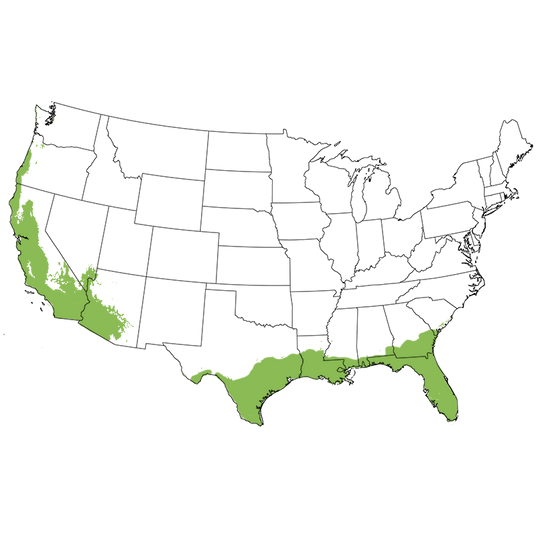
Growing Zones outdoors 9-11, indoors all zones
The Jelly Palm (also known as the Pindo Palm) is not only one of the most popular of the feather Palm varieties but also one of the hardiest! Your Jelly Palm (Butia capitata) is easily recognizable for its curving foliage.
The 5 to 10-foot, fan-shaped leaves consist of elegant, grey/green-hued leaves that arch up, and then inward back toward the impressive trunk. The trunk itself tends to grow straight and true with a 1.5-foot circumference, decorated with the leaf stalks of previous years. The stalks can easily be trimmed for a more manicured look to the grey trunk if you prefer.
In late spring, small yellow/red flowers appear in clusters, eventually transitioning to the fruit this palm is known for. A bit larger than a cherry, the round to oval-shaped, yellow fruit is ready for harvest in mid to late summer.
Both sweet and tart, it has a somewhat fibrous flesh with a fruity bouquet reminiscent of variations of pineapple, apple, and banana (depending upon the soil conditions). It's excellent for use in jelly (thus the name). Some also ferment the fruit for use as a wine!
Landscape Application:
Jelly Palms can be expected to live up to 80 years and are obviously a great investment in an ornamental that's easy to care for and sure to provide enjoyment for years to come! Use one as a specimen plant for your landscape, or group with other Palms for a bigger impact!
Palms work well for urban environments in poorer soils and around hot, humid locations of your landscape. Loving seaside and xeric sites, poolside and backyard seating areas in the sun are perfect locations when you need a touch of exotic flair!
No yard? No problem! Try planting yours in a large raised bed planter or in large containers when young for a unique porch and patio specimen! Even balcony gardeners can enjoy the tropical presence of Jelly Palms in their sunny areas!
- Also Known As Pindo Palm
- Large Gray-Green Palm-Shaped Leaves With Silver Undersides
- Yellowish-Red Flower Clusters
- Sweet-Tart Yellow Fruit - Loved By Birds & Edible For Humans
- Straight Trunk
- Fantastic Specimens & Focal Point Trees
- Works In Large Planters When Young
#ProPlantTips for Care:
Palms need full sun and very well-drained soil to grow best. Provide moderate moisture for young trees and regular water for container plants. Once established, Jelly Palms are drought-tolerant! Prune the leaves off close to the trunk when they yellow or are damaged as needed. It's disease-resistant and doesn't mind the cold.
It's best to keep Jelly Palms away from walkways, driveways where you park your car, and directly over seating areas due to its summer fruit that can be a bit messy when it drops.
- Full Sun
- Well-Drained Soils
- Moderate Moisture - Handles Drought & Heat
- Prune Foliage As It Yellows/Is Damaged
- Cold Hardy, Disease-Resistant & Durable
Add a tropical flair to your landscape that provides loads of interest throughout the year plus tasty fruit for you or your wildlife! Now available at NatureHills.com!



